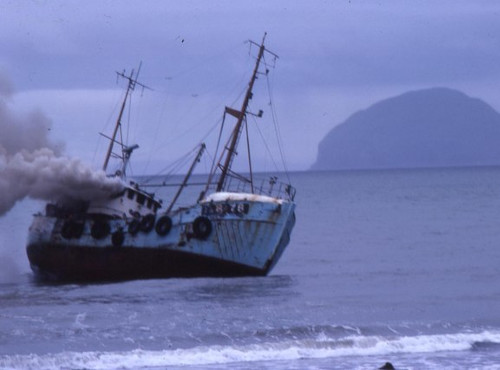Over the last few weeks, we have talked about the different types of marine radios, how to contact Marine Rescue to ask for a radio check and how to use a marine radio to talk to another boat or shore-based radio. There is one final situation in which you will need to be comfortable using your radio. That is in an emergency!
Before we talk about how to use your radio in an emergency, it’s worth briefly outlining what a marine emergency is. In fact, there are three situations that each have their own type of radio call that fall broadly under the category of emergency. The first is a Safety Call which is used to warn others of a danger, like a large log floating in the harbour. We won’t be talking about these today. The second is an Urgency Call which is when a ship or a person needs urgent assistance, but the situation doesn’t warrant the third type of call which is a Distress Call.
Most people ask how to decide if an Urgency Call or a Distress Call is appropriate. The simple answer is how grave and imminent the danger is. If your boat is on fire or sinking rapidly the danger is obviously grave and imminent so a Distress Call is warranted. However, if your boat has lost all power and you are adrift with no method of controlling its movement, while this is serious the danger is possibly not grave or imminent so an Urgency Call would be used. Obviously, there is a lot of grey areas here and ultimately you will have to use your own judgement to ensure your safety.
In either situation the way you use your radio is similar. The main difference is that if you are making a Distress Call you use the word “Mayday,” and if you are making an Urgency Call you use the phrase “Pan Pan”.
Distress Calls are obviously the most important, so we are going to concentrate on these. With that in mind, let’s imagine your boat has struck a submerged object and while other people on board are trying to seal the leak and bail out the incoming water, it looks like the boat is going to sink within minutes, so you’ve decided to make a mayday call. You will:
- Select the emergency channel which on VHF radios is Channel 16
- Transmit “Mayday, Mayday, Mayday”
- Transmit “This is – name and radio call sign of boat in distress” (spoken 3 times)
- Transmit “Mayday” again (spoken once)
- Transmit the name and radio call sign of boat again (spoken once)
- Transmit detail of boat’s position
- Transmit details of the nature of distress and assistance required
- Transmit other information, including number of people on board, vessel description and intentions
- Transmit “Over”
- Wait for a response
Of course, this is the ideal process. In reality, you may not have the opportunity to cover off each line because you simply don’t have time. If in doubt, prioritise transmitting details of where you are, followed by who you are. If nothing else, you want rescuers to know where
to concentrate their search, even if they don’t quite know what they are looking for or what has happened.
The process is simple and when you are calm its easy to do. However, under pressure even the simplest of things can become difficult, so it’s a good idea to think through how you would make a Distress Call from time to time so if you ever need to make one it will hopefully be second nature.
It’s also briefly worth mentioning mobile phones. Mobile phones can certainly be used in an emergency but should not be relied upon as your primary means of communication in an emergency. There are several reasons for this, but the obvious ones are that you may not always have a signal when you need one most and mobile phone batteries are more likely to be flatter than your boat’s battery. So, think of your mobile phone as a Plan B.
If you have any questions about using your radio to make a Distress, Urgency or Security Call, or anything else related to your boat, you can always contact Volunteer Marine Rescue Gladstone

